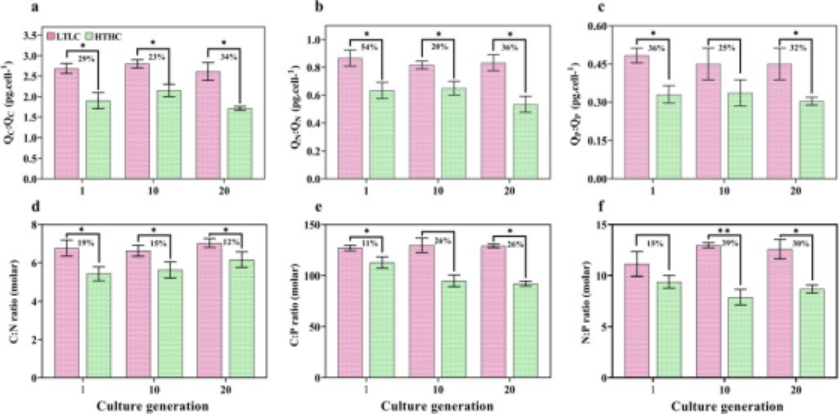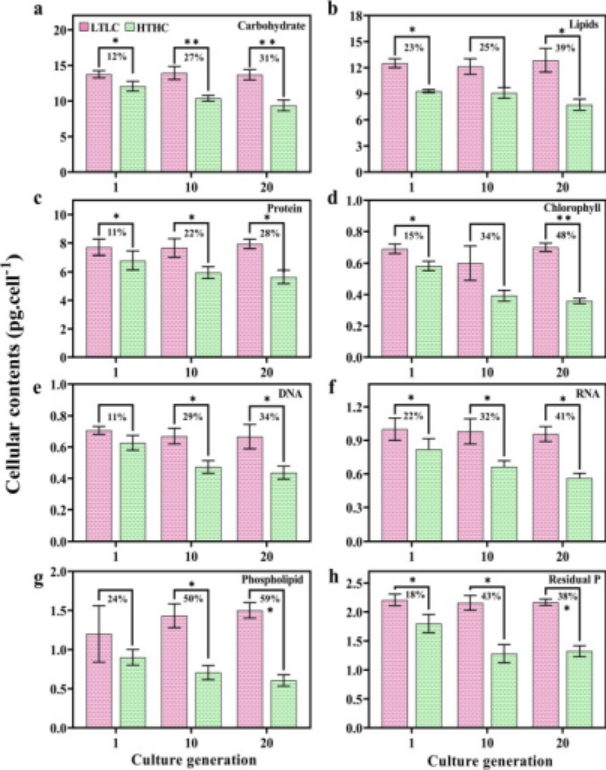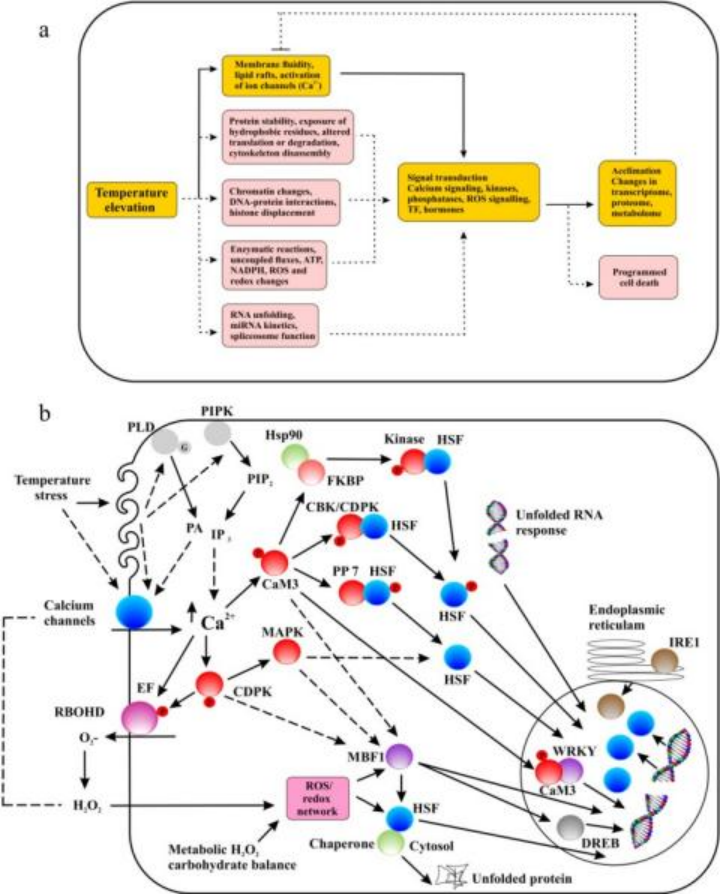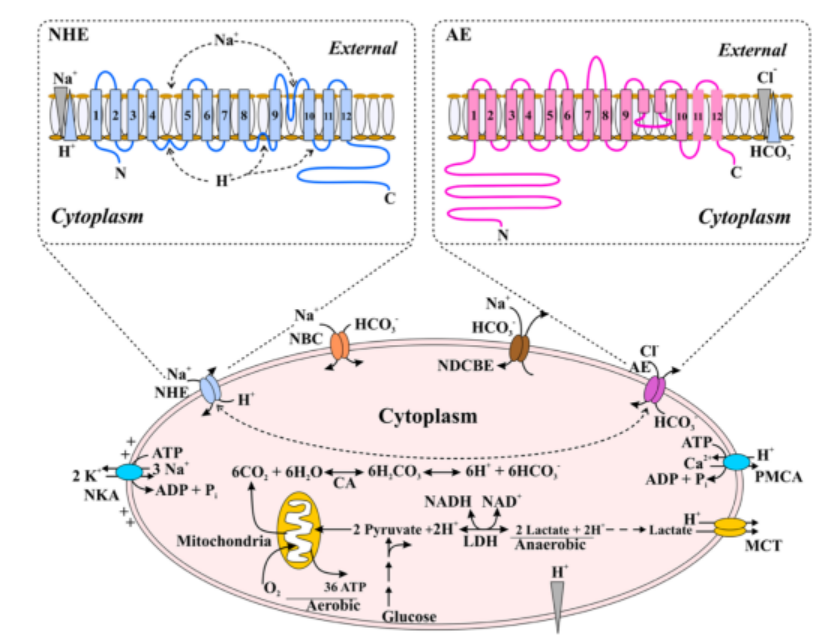A CUG team led by Prof. SUN Jun published “Ocean warming and acidification affect the transitional C:N:P ratio and macromolecular accumulation in the harmful raphidophyte Heterosigma akashiwo” in Communications Biology, which is an open access journal from Nature Portfolio, on February 6, 2023.
Despite an increase in ocean warming and acidifification that is expected to increase the number of harmful algal species worldwide, the population of the raphidophyte Heterosigma akashiwo has been reported to be reduced. However, how this species physically and metabolically modififies transitional C:N:P ratio and macromolecule accumulation is unknown. Considering 1st, 10th, and 20th culture generations under present (low-temperature; low carbon-dioxide [LTLC] 21 °C; pCO2 400 ppm) and future (high-temperature; high-carbon dioxide [HTHC] 25 °C; pCO2 1000 ppm) ocean conditions, we examined transitional C:N:P ratio and macromolecule level changes and performed transcriptome sequencing. The results showed that compared to 1st generation cells, 20th generation cells under HTHC conditions showed a large decrease in carbon quota (QC: 34%), nitrogen quota (QN: 36%), and phosphorus quota (QP: 32%), which were reflflected in an overall reduction in DNA and RNA quantity. Decreased activation of photosynthetic, carbon fifixation and lipid metabolic pathways coincided with changes in photosynthetic effificiency, carbon concentration, and lipid accumulation after long-term (20th generation) exposure to HTHC conditions. We observed that these variations in internal metabolic pathways were caused by external changes in temperature, which activated the (Ca+) signaling pathway, and external changes in pCO2, which altered proton exchange pathways. Our results suggest that H. akashiwo in a temperate environment will undergo profound changes in C:N:P ratio and macromolecular properties, leading to programmed cell death, in the future.

Fig. 1 Elements and stoichiometry changes in Heterosigma akashiwo grown to different generations under LTLC and HTHC conditions.

Fig.2 Variation in the macro (carbohydrate, lipid, and protein) and minor (chlorophyll, DNA, RNA, phospholipid, and residual phosphorus) molecular content in Heterosigma akashiwo grown to different generations under LTLC and HTHC conditions.

Fg. 3 Temperature-sensing scheme in algae. a Changes in temperature impact diverse processes in algae. b A schematic model showing the signal transduction pathway activated in response to temperature stress in algae.

Fg.4 The regulation of cytoplasmic pH by ion carriers in algal metabolism.
(Edited and translated from the Chinese version)